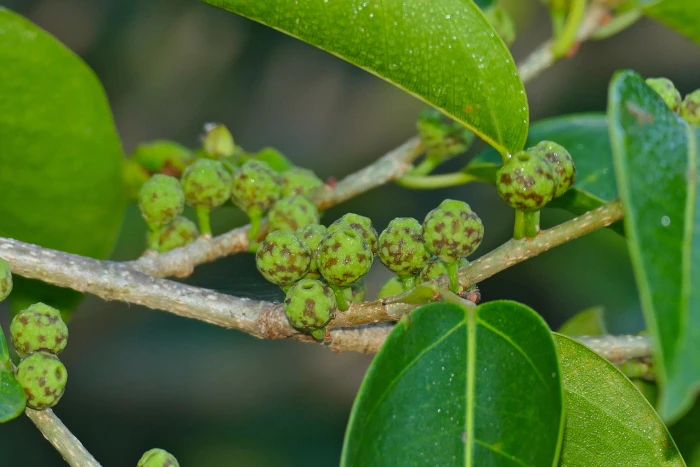Strangler Fig
(Ficus pertusa)
Strangler Fig (Ficus pertusa)
/
/

Bernard DUPONT
CC BY-SA 2.0
Image By:
Bernard DUPONT
Recorded By:
Copyright:
CC BY-SA 2.0
Copyright Notice:
Photo by: Bernard DUPONT | License Type: CC BY-SA 2.0 | License URL: https://creativecommons.org/licenses/by-sa/2.0/ | Uploader: Bernard DUPONT | Publisher: Flickr |



















Estimated Native Range
Climate Requirements for Moses Lake, Washington
| This Plant | Your Site | Plant Suitability for Your Location | ||
|---|---|---|---|---|
| • Precipitation | 7" - 275" | 7" | Your precipitation may be insufficient for this plant. Irrigate N" / year. | Irrigate N" / year |
| • High Temp. | 62°F - 108°F | 87°F | Your summer temperatures are normal for this plant. | Excellent |
| • Low Temp. | 3°F - 74°F | 22°F | Your winter temperatures are normal for this plant | Excellent |
This plant should grow well at your location with about N inches per year (Y minutes per month) of irrigation.
Summary
Ficus pertusa, commonly known as Strangler Fig, is an evergreen tree native to the tropical rainforests of Central and South America. It often starts life as an epiphyte, growing on other trees and eventually enveloping them completely. This species can reach heights of 30-45 feet (9-14 meters) with a similar spread, and is characterized by its broad canopy and buttressed roots. The leaves are large, glossy, and leathery, adding to its dense foliage. Strangler Figs produce small, inedible fruit that is important for wildlife.
Strangler Fig is valued for its striking appearance and adaptability, making it suitable for large tropical or subtropical landscapes, urban parks, and as a shade tree. It is also used for reforestation projects due to its fast growth and ecological role in natural forests. In cultivation, it requires full sun to part shade, consistent medium moisture, and well-draining soil. It is tolerant of a range of soil types, from sandy to loamy. However, due to its potential size and root system, it should be planted with care to avoid structural damage.CC BY-SA 4.0
Strangler Fig is valued for its striking appearance and adaptability, making it suitable for large tropical or subtropical landscapes, urban parks, and as a shade tree. It is also used for reforestation projects due to its fast growth and ecological role in natural forests. In cultivation, it requires full sun to part shade, consistent medium moisture, and well-draining soil. It is tolerant of a range of soil types, from sandy to loamy. However, due to its potential size and root system, it should be planted with care to avoid structural damage.CC BY-SA 4.0
Plant Description
- Plant Type: Tree
- Height: 30-45 feet
- Width: 30-45 feet
- Growth Rate: Moderate
- Flower Color: N/A
- Flowering Season: Non-Flowering
- Leaf Retention: Evergreen
Growth Requirements
- Sun: Full Sun, Part Shade
- Water: Medium
- Drainage: Fast
Common Uses
Bird Garden, Drought Tolerant
Natural Habitat
Tropical rainforests
Other Names
Common Names: Bibosi, Oleanderfikus, Bibosi Palomo
Scientific Names: Ficus pertusa, Ficus arbutifolia, Ficus radicans, Ficus trachelosyce, Ficus subtriplinervia, Ficus gemina, Ficus hirsuta, Ficus ochroleuca, Ficus erythrosticta
GBIF Accepted Name: Ficus pertusa L.fil.